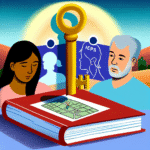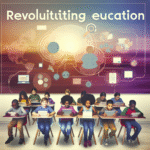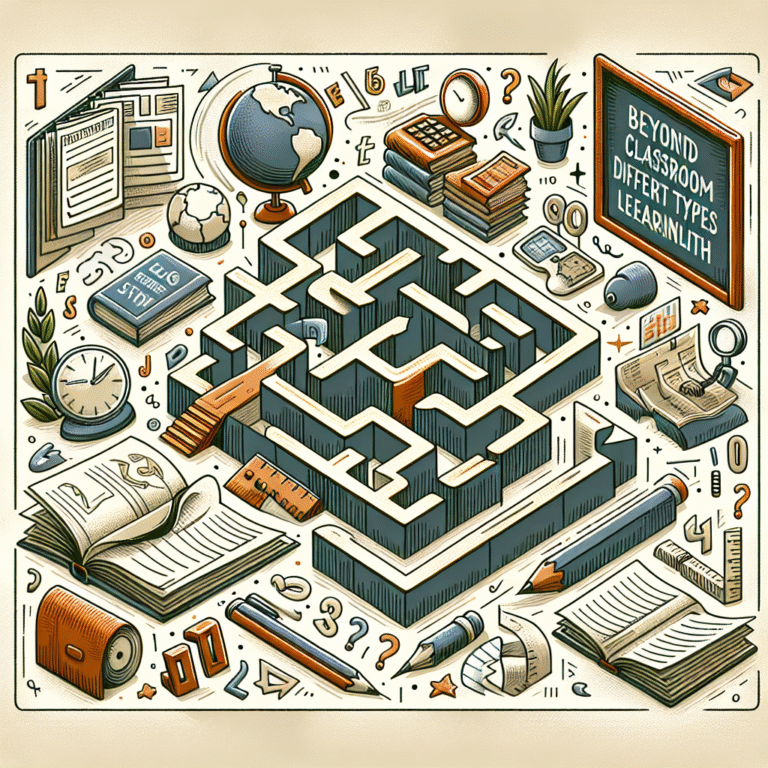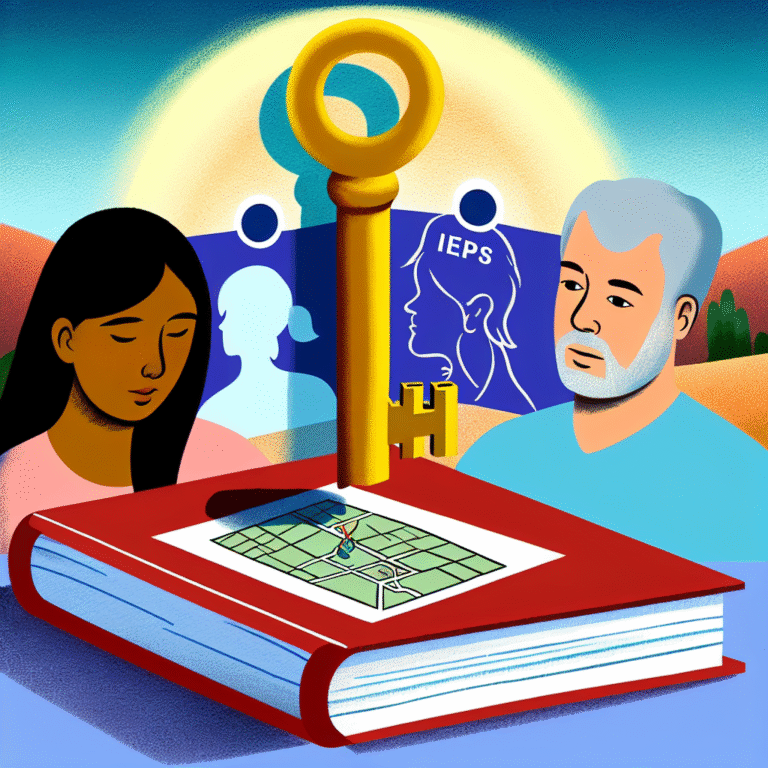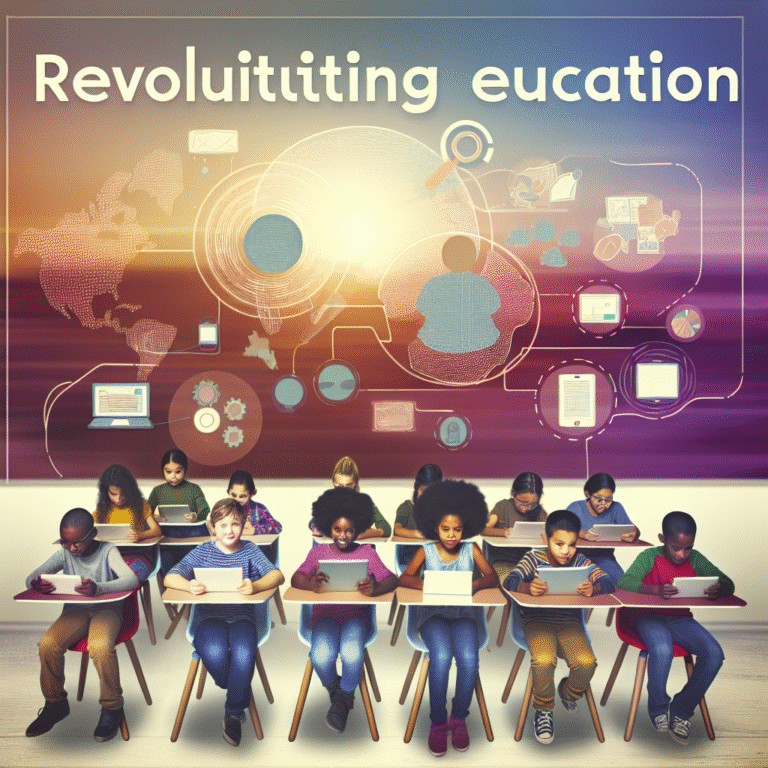
Fostering Literacy: Proven Approaches for Supporting Students with Reading Disabilities
Introduction
Imagine a world where every child, regardless of their abilities, can embrace the joy of reading and storytelling. Literacy is not just a skill; it is a gateway to learning, communication, and social interaction. However, for students with reading disabilities, this gateway can feel locked or even unreachable. The statistics are sobering: an estimated 5-15% of children face challenges in reading, translating to millions who struggle daily. Therefore, fostering literacy: effective approaches for supporting students with reading disabilities is not just important; it is essential for building a more inclusive and understanding society.
In this article, we will explore innovative strategies, practical interventions, and real-world case studies that demonstrate the power of targeted support in fostering literacy. Whether you are a teacher, parent, or advocate, the insights provided here will empower you to make a positive impact on the lives of students facing reading challenges. We will delve into various methods, tools, and resources that can transform obstacles into opportunities, highlighting the importance of early intervention, tailored instruction, and collaborative efforts in fostering literacy.
The Challenge of Reading Disabilities
Before diving into effective approaches, it’s vital to understand the landscape of reading disabilities. Dyslexia, for instance, is one of the most common learning disabilities, affecting the ability to process written language. Children with dyslexia may struggle with phonemic awareness, decoding, and fluency, which can lead to frustration and a lack of confidence in their reading abilities. According to the International Dyslexia Association, up to 17% of the population may experience dyslexia, emphasizing the need for effective literacy interventions.
Understanding Different Reading Disabilities
Reading disabilities can manifest in various forms, including:
- Dyslexia: Difficulty with decoding and word recognition, often impacting spelling and comprehension.
- Dysgraphia: Challenges with writing, which can indirectly affect reading fluency and expression.
- Dyscalculia: While primarily related to mathematics, struggles with numbers can affect reading comprehension in texts with numerical information.
To effectively support students, educators and caregivers must recognize the unique needs of each child and the distinctions between these disabilities.
Effective Approaches for Fostering Literacy
1. Early Assessment and Intervention
Research shows that early intervention is crucial in fostering literacy among students with reading disabilities. Identifying issues as soon as possible allows for timely support. Comprehensive assessments conducted by professionals can provide insight into a child’s strengths and weaknesses, helping to tailor strategies accordingly.
Case Study: The Power of Early Intervention
A school district in Texas implemented mandatory screening for reading disabilities at the beginning of kindergarten. By identifying at-risk students, they provided additional resources, including specialized reading programs and one-on-one tutoring. Over the course of three years, the district observed a 40% increase in reading proficiency levels among students with previously identified disabilities.
2. Multi-Sensory Approaches
Multi-sensory learning involves using visual, auditory, and kinesthetic strategies to teach reading. This technique caters to various learning styles and engages students more effectively.
Tools and Strategies:
- Phonics Instruction: Utilizing letter tiles and sound cards allows students to build words physically.
- Interactive Reading Software: Programs that combine visual elements with auditory feedback can strengthen comprehension and engagement.
Case Study: A Multi-Sensory Reading Program
An elementary school implemented a multi-sensory reading program combining Wilson Reading System and Assistive Technology. Students engaged with tactile letters, visual aids, and oral components. As a result, 75% of the program participants showed substantial gains in reading fluency within one academic year.
3. Personalized Learning Plans
Creating personalized learning plans (PLPs) enables educators to set clear goals tailored to each student’s needs. Ongoing progress monitoring allows for adjustments in teaching methods and materials.
Features of Effective PLPs:
- Goal Setting: Collaborate with the student to set achievable literacy goals.
- Flexible Materials: Provide access to a range of reading materials—fiction, nonfiction, and digital formats—to cater to different interests.
Case Study: Tailoring Plans for Success
A middle school in California developed individualized education plans (IEPs) for students with dyslexia that included structured literacy interventions and frequent check-ins. This approach resulted in significant improvements in reading engagement and standardized test scores, showcasing the efficacy of personalized education.
4. Encouraging a Growth Mindset
Fostering a growth mindset is essential for students with reading disabilities. When students believe they can improve their reading skills through effort and practice, they are more likely to engage with the material.
Strategies to Encourage Growth Mindset:
- Positive Reinforcement: Celebrate small victories to build confidence.
- Learning from Mistakes: Emphasize that errors are part of the learning process.
Case Study: Transforming Attitudes Towards Reading
After an initiative at a local school focused on developing a growth mindset among struggling readers, teachers reported an increase in students’ willingness to try new reading strategies. Participating students showed marked improvement in their reading assessments, driven by newfound self-belief.
5. Family Involvement and Support
Incorporating families in the literacy journey is vital. Parents can reinforce the strategies learned in school, providing a supportive environment at home. Workshops and training sessions for parents can bridge the gap between home and school learning.
Tools for Engaging Families:
- Home Literacy Activities: Simple exercises that parents and children can do together to reinforce learning.
- Communication: Regular updates between teachers and families to track progress and share resources.
Case Study: Building Bridges with Families
A community in Florida organized monthly literacy nights, inviting families to participate in reading activities. These events empowered parents to become active reading partners. Surveys indicated improved attitudes towards reading in students, along with increased literacy engagement at home.
Utilizing Technology for Literacy Development
As technology continues to evolve, it offers innovative ways to support literacy among students with reading disabilities. From apps designed to improve reading skills to online resources, technology can make learning more accessible and engaging.
Effective Tools:
- Text-to-Speech Software: Assists in improving comprehension by allowing students to hear text read aloud.
- Reading Games: Interactive games that teach phonics and word recognition in a fun way.
Case Study: Tech-Enhanced Learning
A high school implemented an array of technological tools, including text-to-speech and adaptive learning software, for students with reading disabilities. As a result, 60% of participating students reported increased confidence and higher participation during reading activities.
Collaborative Teaching Approaches
Implementing a collaborative teaching model allows special education and general education teachers to work together to support struggling readers. Co-teaching and team teaching can unite diverse skills and perspectives for the benefit of students.
Benefits of Collaborative Teaching:
- Shared Expertise: Teachers can pool resources and expertise to create comprehensive support systems.
- Increased Engagement: A varied teaching approach keeps students engaged and responsive.
Case Study: Co-Teaching Success
In a New York City high school, co-teaching strategies were employed to provide literacy support in mainstream classrooms. Observations showed increased engagement levels and improved academic performance among students with reading disabilities who previously felt isolated.
Fostering a Literacy-Rich Environment
Creating an environment that celebrates reading can encourage all students, especially those with disabilities, to become more engaged. Literacy-rich environments include well-stocked libraries, reading corners, and daily reading routines.
Elements of a Literacy-Rich Environment:
- Diversity of Reading Materials: Including texts that reflect the students’ backgrounds and interests can inspire a love for reading.
- Reading Challenges: Implement fun challenges and incentives for students to engage with various literature.
Case Study: Transforming Spaces into Learning Havens
A school district in Ohio redesigned its libraries into interactive reading lounges, incorporating comfortable seating, technology, and a variety of genres. As a result, reading engagement scores rose by 25%, making reading a popular activity among students, including those with disabilities.
Conclusion
Fostering literacy: effective approaches for supporting students with reading disabilities encompass a blend of innovative techniques, early intervention, personalized learning, and community involvement. It is our duty as educators, families, and advocates to ensure that every child has the opportunity to experience the magic of reading. By embracing these strategies and fostering a collaborative, growth-oriented environment, we can transform challenges into triumphs.
Let us remember: every effort we put into nurturing literacy can have a profound and lasting impact on a child’s life, opening doors to opportunities they may have never thought possible.
FAQs
1. What are some early signs of reading disabilities in children?
Look for signs such as difficulty recognizing letters, challenges with phonemic awareness, and poor spelling habits. These could indicate potential issues and warrant further evaluation.
2. How can I support my child with reading disabilities at home?
Engage them with multi-sensory reading activities, create a routine that includes daily reading time, and use technology tools that support their learning style.
3. Are reading disabilities permanent?
Reading disabilities are not necessarily permanent. With the right interventions and support, many students can significantly improve their reading skills over time.
4. What role does teacher training play in supporting students with reading disabilities?
Effective teacher training empowers educators with the knowledge and skills they need to identify reading disabilities and implement appropriate interventions.
5. How can schools work with parents to support literacy?
Establishing regular communication, inviting parents to participate in school events, and providing resources for home-based literacy activities can build a strong partnership in supporting students.
Through understanding, advocacy, and resourcefulness, we can practice fostering literacy: effective approaches for supporting students with reading disabilities, ensuring that every child has a chance to shine.

